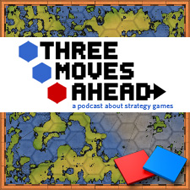A year ago, I wrote about how everyone’s love of Oblivion was leaving me out in the cold. A hot, new title that became the game de jour for weeks. I eventually addressed that and found that they were mostly right – love it or hate it, Oblivion is a game worth talking about. (I lean towards the love side.)
Yesterday, I got an email from a friend asking if I was excited about the new World of Warcraft expansion. There was no sarcasm here. He was genuinely looking forward to being a blood elf. I explained that I don’t WoW but that I hoped fears of server troubles would not come to pass.
World of Warcraft is one of those once in a while games that transcends the gaming world. Even if you don’t play it, you can’t really escape it. I was at a dinner party and explained what I did for a pseudo-living and one of the guests immediately began asking about WoW – he didn’t play either, but he was fascinated by the idea (apparently oblivious that WoW isn’t the first of anything.) Wargaming friends are turning to WoW. It has become the amateur video maker’s setting of choice. It’s like The Sims only bigger because you are obligated to share the experience with your friends.
As a voracious consumer of gaming news and opinion, I pick up even more. I know what MC is. I can spell Azeroth. I know that you top out at level 60 (70 now, I guess). I know none of these things about Everquest, Dark Age of Camelot or Asheron’s Call – and I spent a lonely month in Asheron’s Call. WoW is bigger than any game since PacMan.
So why have I resisted? I must have had a half-dozen people try to strong arm me into their guilds. The subscription just means one less case of beer a month, or maybe more used books. Maybe the social scientist in me is more fascinated by the anthropology of this thing more than the idea of actually playing it. CGM/Massive Head Honcho Steve Bauman has pointed to the time crunch and lack of a finished state as an issue in MMOs, but he plays WoW.
Maybe I’ll try the Next Big Thing when it comes along. WoW can’t go on forever, right?

